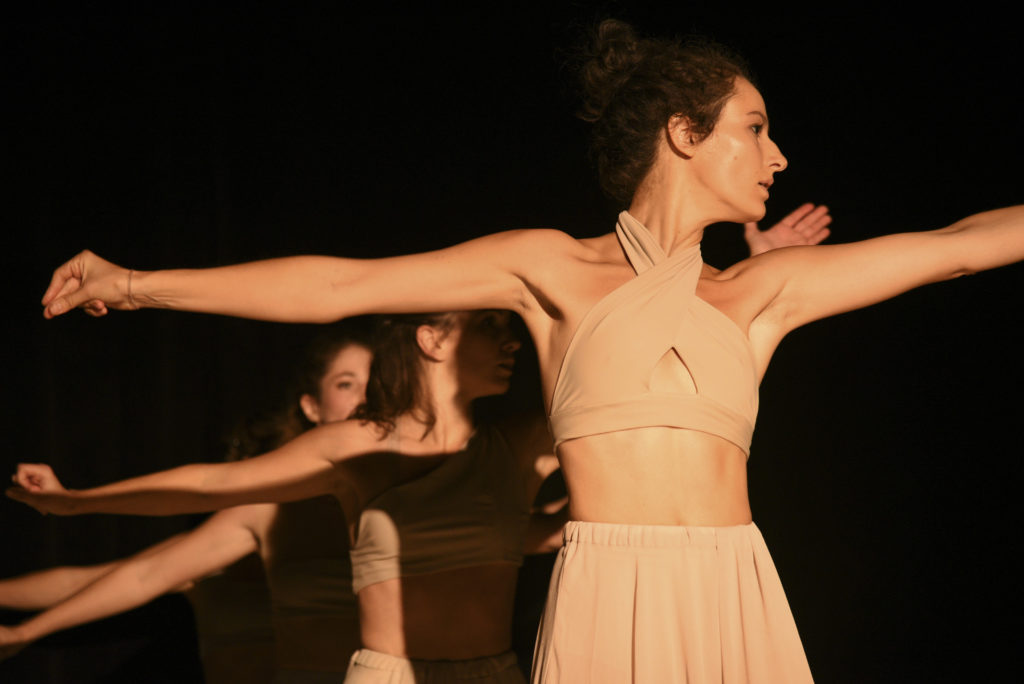Choreographic and vocal piece for 5 female performers
Duration: 50 min
Short Description
The Chorus goes through the process of the establishment of the identity of the group, exploring how human societies have been formed through collective rituals. How do social groups function? What are the interactions, the tensions between the group and the individual? On stage, an imaginary tribe of women is animated by a continuous mechanism of change, in perpetual balance quest.
Chorus
In Greek tragedy the chorus represents the voice of the general society, the collective conscience, but it is placed in the background, the light being put on the protagonists. I have chosen the theme of the chorus, of the ensemble, of the group, to make it a subject in its own right. I was interested in the rites and routines that bind, in the question of what makes the cohesion of a group. This naturally led my research to the ritual. From the depths of time, the ritual, that reassures, that channels the human anxiety by transforming it to a shared symbolic action. In this piece I intend to circulate on the stretched axis between the universal need of belonging, present in all human societies and the very specific forms that each one of them has given to it. Through the extraordinary diversity of traditional dances, the Chorus seeks what connects all of them to the same fundamental acts.
On stage
An imaginary tribe of women, a miniature of human society, is animated by a continuous mechanism of change. Destabilization and research of a new balance, infinite research for one’s place in the group, permanent construction of the collective identity in continuous evolution, all of this forms a moving picture in perpetual mutation.
Choreographic principles
Rather than predefined gestural sequences, for this piece I have preferred to create a system of ritual acts, one for each scene, a framework of specific rules within which the performers are invited to improvise. That is why the performers are constantly changing roles and positions and the performance varies from one presentation to another. The element of non-determination in the choreographic structure, introduces the notion of the common thinking and the shared responsibility, two major factors in the way social groups function. The performers, are constantly looking for the connection to the group, for the fusion, and they are therefore brought to take decisions in real time, as they are passing through the ritual acts. The performers take the time they need to arrive at a true unison, they feel when they have reached the desired state and know that they then must change leader and move on to the next ritual act.
It is also a conscious choice not to follow a musical score but to produce the “music” on stage. Sliding feet on the ground, whispering, breathing, body percussion, polyphonic singing, nothing comes from the outside, everything is made in real time within the group.
Image Gallery by Nelly Kim Chi
The artistes
Choreographer : Efi Farmaki
Dancers : Tiphaine Babin, Manon Chaurand, Pauline de Lattre, Yael Heynderickx, Elise Roy
Costumes : Clarisse Chambrion
Lights : Jean-Charles Levesque
Vocal Training : Anne-Charlotte Beligné
Partners
La Fabrique de la Danse : Briqueterie, Centquatre, Carreau du Temple
The town of Issy-les-Moulineaux: Espace Icare, Clavim
Le Centre National de la Danse (CND)
Le Festival Mouvement Contemporain
La compagnie du passeur
Image Gallery by Fabrice Pairault

















